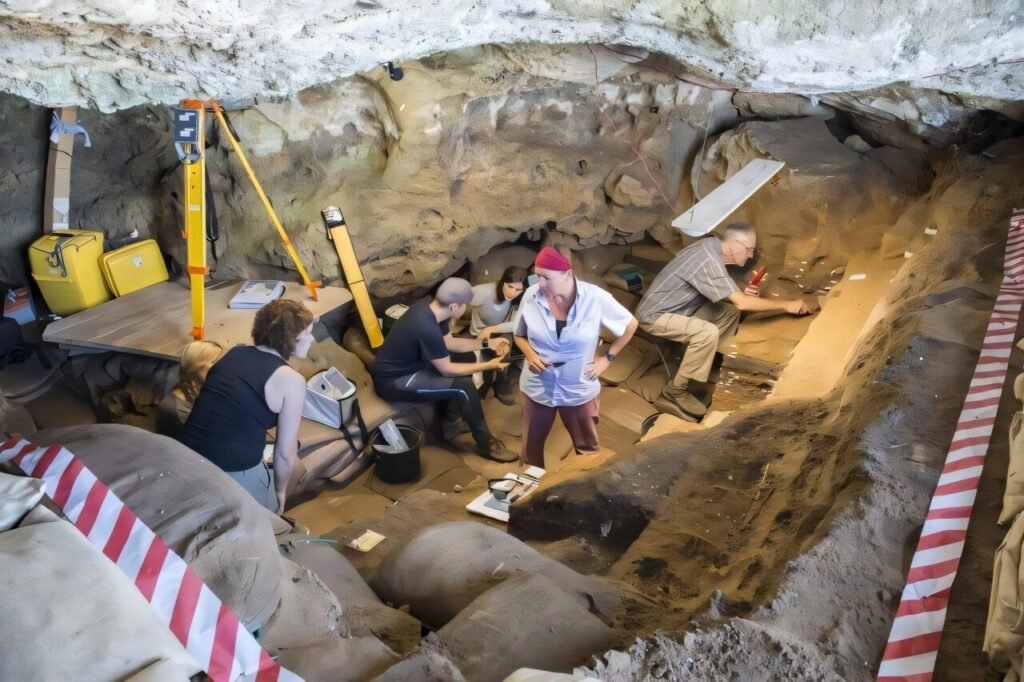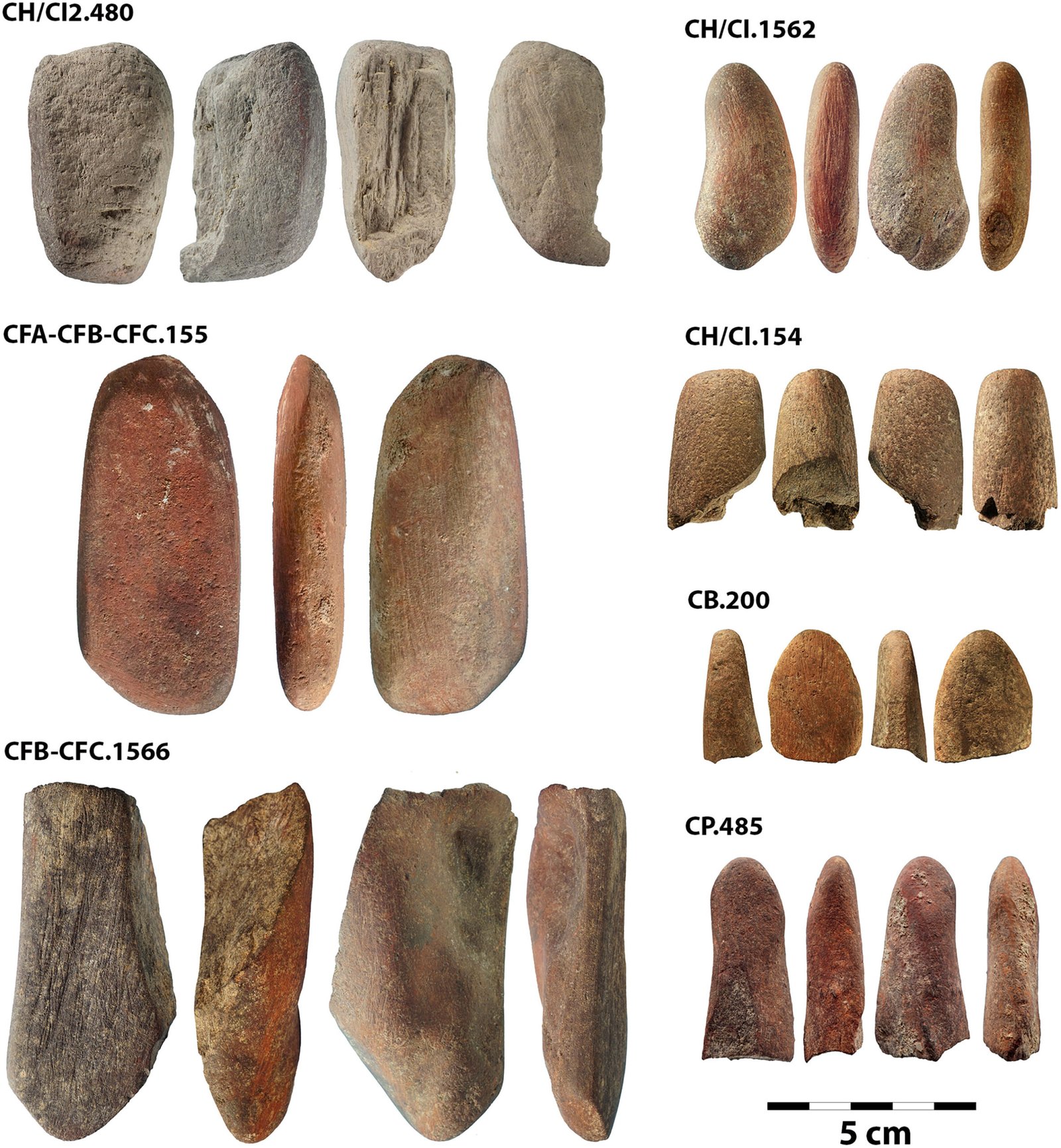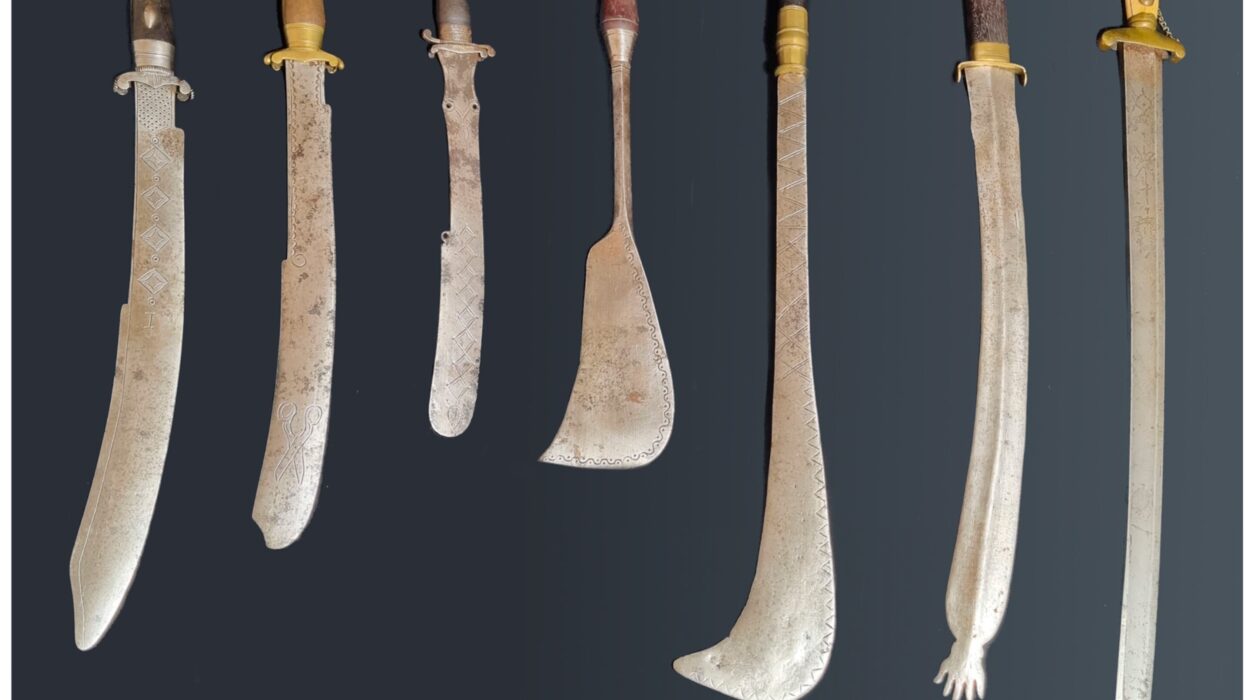Beneath the coastal cliffs of South Africa, inside the dark, humid corridors of Blombos Cave, a 70,000-year-old secret was hiding in plain sight. It wasn’t gold or bones that sparked this revelation—it was ochre. The humble red mineral long associated with early art and ritual has now been revealed as something much more sophisticated: a precision tool.
In a groundbreaking new study, researchers at SapienCE, the Centre for Early Sapiens Behaviour, have uncovered the first direct evidence that early modern humans used ochre as a specialized implement for making stone tools. This finding redefines what we thought we knew about human intelligence and technological skill during the Middle Stone Age.
“We now know that ochre was a multi-use tool that played an essential role in the daily lives of early modern humans,” says lead researcher Elizabeth Velliky. “I believe this discovery could change how we view ochre and the past, and deepen our understanding of early human behavior.”
The Spark of a Discovery
The revelation didn’t come from a dramatic dig or a newly unearthed cave. Instead, it began quietly, in a laboratory in Cape Town. While reviewing artifacts from earlier excavations, Velliky spotted something odd in a piece of ochre. It didn’t look like the rest. The red stone was worn in unusual places, its shape subtly but purposefully modified. It told a different story.
She took the piece to her colleagues—world-renowned researchers Francesco d’Errico, Karen van Niekerk, and Christopher Henshilwood. They all saw it. This wasn’t pigment production. This was something else.
And it wasn’t alone.
Box after box, the team sifted through ochre artifacts collected over years. More examples emerged—each one shaped, marked, and used in the same curious way. What they had on their hands was a new artifact type, something archaeologists had speculated about but never confirmed: ochre retouchers, purpose-made tools used in the delicate, skilled craft of flint knapping.

Stone by Stone: Unlocking Ancient Skill
Their study, published in Science Advances, focused on seven ochre tools found in Blombos Cave, dated between 90,000 and 70,000 years ago. The evidence was unmistakable. Microscopic analyses and replication experiments confirmed that the red stones were used to shape other stone tools—likely in the creation of Still Bay points, sophisticated spearheads known for their symmetry and sharpness.
These weren’t random rocks picked off the ground. Each ochre piece was deliberately selected, then reshaped to serve a very specific purpose in the toolmaking process. Marks on the stones matched those left by two complex techniques: direct percussion and pressure flaking. The latter, especially, requires high precision and a steady hand—implying not just technical knowledge, but practice and mastery.
“This is not casual use,” says Velliky. “These ochre pieces were carefully modified. They were purpose-built. That shows intentionality and expertise.”
When Symbolism Meets Science
Until now, ochre has mostly been seen through the lens of symbolism. From cave paintings to burial rites, it was believed to carry spiritual or cultural meaning—a kind of early language in color. But this discovery adds a powerful new layer.
“We now have evidence that ochre was not only a medium for symbolic expression but also a key material in specialized tool production,” says Christopher Henshilwood, director of SapienCE and head of the original Blombos Cave excavations. “It reflects a level of technological sophistication previously associated with much later periods.”
Ochre, it turns out, straddled two worlds: the artistic and the practical. It painted the faces of rituals, but also shaped the blades that carved meat and wood. And it reveals that early Homo sapiens didn’t just survive—they thought, innovated, and engineered.
The Human Behind the Tool
These findings don’t just tell us how our ancestors made tools—they hint at who those people were. The high degree of standardization in the ochre retouchers suggests that they weren’t shared community objects. More likely, they belonged to individual artisans—skilled knappers who knew their craft and guarded their tools with pride.
“The sophistication of these pressure flakers implies that they were the personal property of expert toolmakers,” says Francesco d’Errico. “They may have functioned not only as practical instruments but also as indicators of identity and technical prowess.”
This personal touch suggests that even 70,000 years ago, humans were beginning to think in social and symbolic terms—who they were, what they could do, and how they wanted others to see them.
A Shift in the Story of Us
The traditional narrative of human evolution has long emphasized a slow rise toward complexity, with symbolic thought and advanced tools arriving relatively late. But discoveries like this one are rewriting that script.
“This discovery will add another layer to our understanding of the behavioral modernity of early Homo sapiens in southern Africa,” says Karen van Niekerk, SapienCE Deputy Director. “It shows us that these people were thinking in complex ways—technologically, socially, and symbolically.”
Blombos Cave, already famous for its engraved ochre plaques and shell beads, has now yielded another treasure. It reminds us that the roots of modern human behavior run deeper than we imagined. And it challenges us to reconsider what it means to be “modern.”
Beyond the Cave: What Comes Next?
The SapienCE team hopes their discovery will inspire new conversations and fresh research. Could similar tools be hiding in other caves across Africa or beyond? Might ochre retouchers have been used elsewhere, but mistaken for pigment stones?
Future excavations and experimental archaeology could shed more light on this. But even now, the message is clear: early modern humans were far more technologically advanced than we’ve given them credit for. They were inventors, engineers, and artists—sometimes all at once.
A Red Stone, A Human Touch
In a way, this discovery brings us closer to our ancestors—not just in understanding what they did, but in sensing how they lived. It connects us through the quiet intimacy of craftsmanship: the feeling of shaping something with your hands, of learning through repetition, of creating tools that carry your signature.
The ochre retouchers of Blombos Cave are not just artifacts. They are time capsules—silent yet eloquent. They speak to a world where art and science were not separate, where survival and expression were intertwined, and where the first humans were already far more like us than we ever dared to believe.
Reference: Elizabeth C. Velliky et al, Unveiling the multifunctional use of ochre in the Middle Stone Age: Specialized ochre retouchers from Blombos Cave, Science (2025). DOI: 10.1126/sciadv.ads2797. www.science.org/doi/10.1126/sciadv.ads2797






